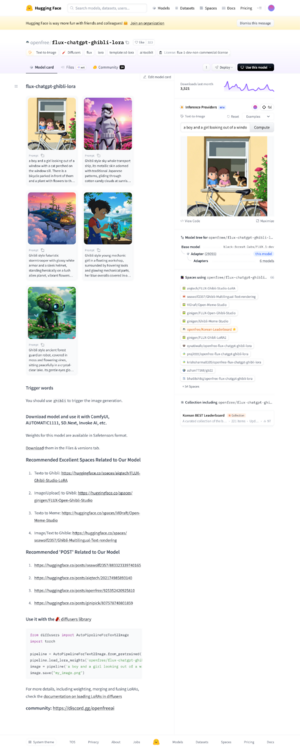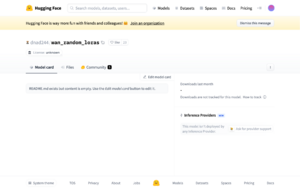Model card: Difference between revisions
No edit summary |
No edit summary |
||
| (2 intermediate revisions by the same user not shown) | |||
| Line 1: | Line 1: | ||
As models begin to pile up in open repositories like Hugging Face, model cards have emerged as a privileged means to document them. Think about model cards as nutrition labels for models. Ideally, they list the model's ingredients, how it was trained and its validation procedures as well as its intended use and limitations. Whilst the repositories cannot force their use upon the users, they automatically create an empty model card when a new models is uploaded in an effort to encourage standardization and transparency. However, if one examines how model cards are redacted, one can see that their content can vary a lot. Sometimes they thoroughly document the model, with a reference to an academic paper, sometimes they offer only minimal information or are simply empty. In that, model cards testify to the diverse nature of model providers. Some are working in computer science labs or in companies, others are amateurs with sometimes little time left for the tedious work of documentation or simply no desire to share widely their production. Finally, an empty model cards doesn't necessarily mean absence of documentation. Users may find more appealing to document them in another form. In CivitAI, a platform where Manga fans share their models and LoRAs, each model is introduced with a succinct description written in a more affective tone where the author explains their goal, cracks a joke, begs for a tip on their Patreon and thanks their network of collaborators as well as the models and resources they are building on | == Model card == | ||
As models begin to pile up in open repositories like [[Hugging Face]], [https://arxiv.org/abs/2402.05160 model cards] have emerged as a privileged means to document them. Think about model cards as nutrition labels for models. Ideally, they list the model's ingredients, how it was trained and its validation procedures as well as its intended use and limitations. Whilst the repositories cannot force their use upon the users, they automatically create an empty model card when a new models is uploaded in an effort to encourage standardization and transparency. However, if one examines how model cards are redacted, one can see that their content can vary a lot. Sometimes they thoroughly document the model, with a reference to an academic paper, sometimes they offer only minimal information or are simply empty. In that, model cards testify to the diverse nature of model providers. Some are working in computer science labs or in companies, others are amateurs with sometimes little time left for the tedious work of documentation or simply no desire to share widely their production. Finally, an empty model cards doesn't necessarily mean absence of documentation. Users may find more appealing to document them in another form. In [[CivitAI]], a platform where Manga fans share their models and LoRAs, each model is introduced with a succinct description written in a more affective tone where the author explains their goal, cracks a joke, begs for a tip on their Patreon and thanks their network of collaborators as well as the models and resources they are building on. | |||
== Examples == | == Examples == | ||
| Line 13: | Line 8: | ||
[[File:Screenshot 2025-05-23 at 12-36-34 dnad244 wan random loras · Hugging Face.png|thumb|left|alt=An empty model card|An empty model card]] | [[File:Screenshot 2025-05-23 at 12-36-34 dnad244 wan random loras · Hugging Face.png|thumb|left|alt=An empty model card|An empty model card]] | ||
<div style="clear:both;"></div> | <div style="clear:both;"></div> | ||
== Resources == | == Resources == | ||
Latest revision as of 19:53, 19 August 2025
Model card
As models begin to pile up in open repositories like Hugging Face, model cards have emerged as a privileged means to document them. Think about model cards as nutrition labels for models. Ideally, they list the model's ingredients, how it was trained and its validation procedures as well as its intended use and limitations. Whilst the repositories cannot force their use upon the users, they automatically create an empty model card when a new models is uploaded in an effort to encourage standardization and transparency. However, if one examines how model cards are redacted, one can see that their content can vary a lot. Sometimes they thoroughly document the model, with a reference to an academic paper, sometimes they offer only minimal information or are simply empty. In that, model cards testify to the diverse nature of model providers. Some are working in computer science labs or in companies, others are amateurs with sometimes little time left for the tedious work of documentation or simply no desire to share widely their production. Finally, an empty model cards doesn't necessarily mean absence of documentation. Users may find more appealing to document them in another form. In CivitAI, a platform where Manga fans share their models and LoRAs, each model is introduced with a succinct description written in a more affective tone where the author explains their goal, cracks a joke, begs for a tip on their Patreon and thanks their network of collaborators as well as the models and resources they are building on.
Examples


